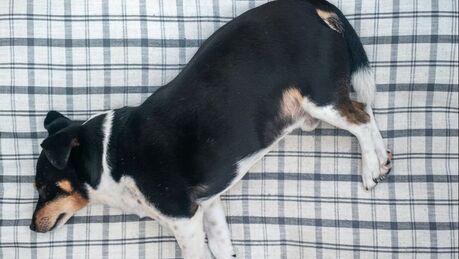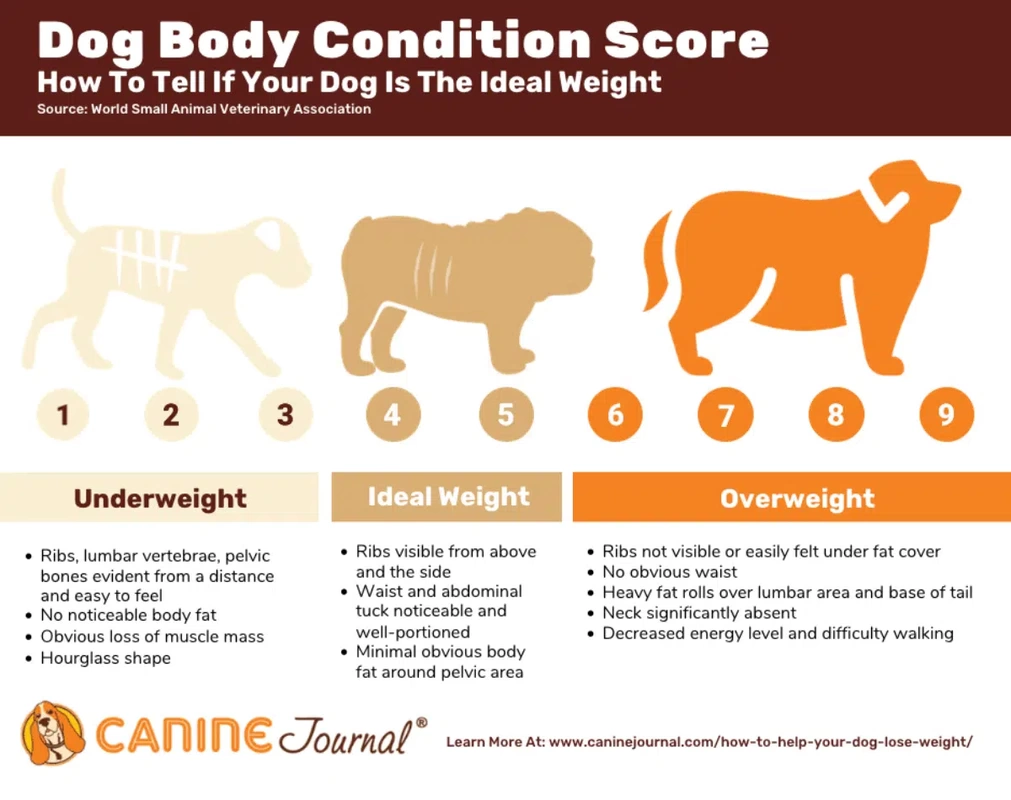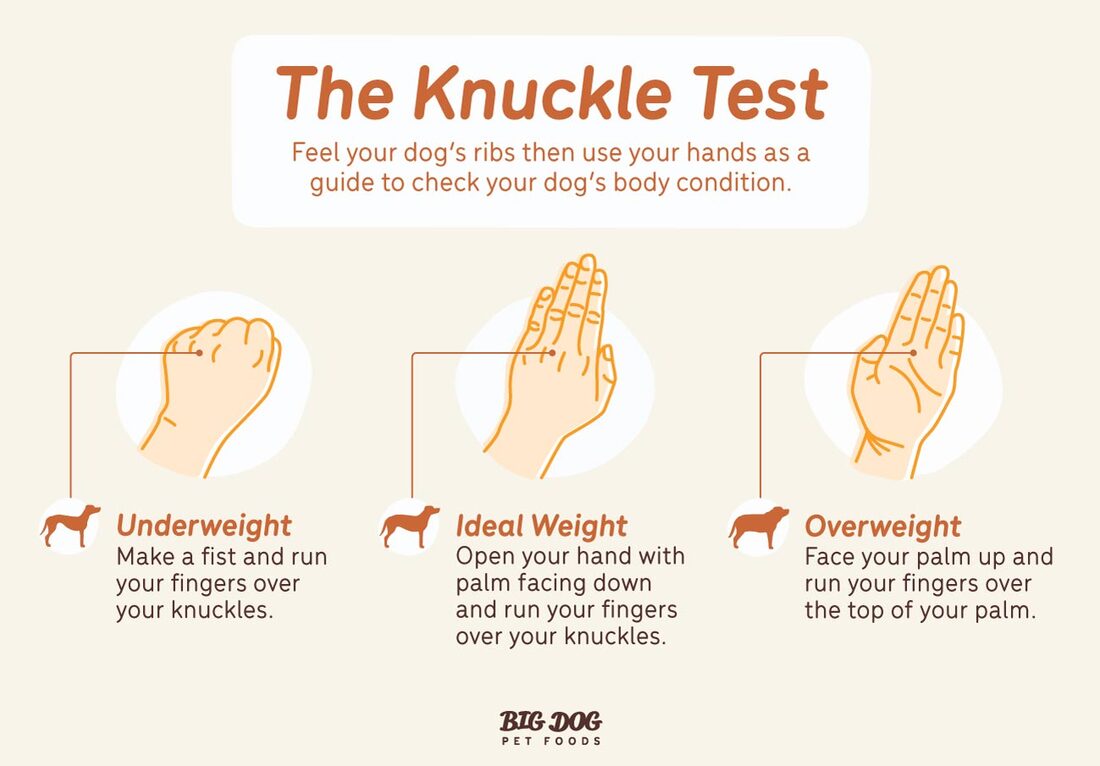|
Dog obesity is something that we see worryingly often in our line of work, and instances only seem to be increasing in frequency. Look, we understand how easy it is to give in when you’re eating something and your dog sidles up to the table with big eyes. They have the whole ‘you didn’t feed me enough’ persona which has been developed and perfected over thousands of years. They wouldn’t have survived this long as our companion animals without that skill… but it’s making them sick. It is frustrating and sad to see dogs not be able to enjoy their experience out walking fully because their movement is stiff and difficult, or they are running out of breath. Social media has not helped, in that it is comical or ‘cute’ to see overweight dogs. Words used like, ‘chonky’, ‘fluffy’, ‘chungus’ and anything along those lines reduces the seriousness of the situation. Without clear portioning knowledge (feeding guides are not really made for your average owner and can be really confusing), many pet parents are overfeeding main meals. That, supplemented with the treats off the table or used during training - you’ve got dogs getting bigger and bigger. When overweight is the norm, people will see a dog that is a normal weight, and can believe that they are ‘underweight’. Comments of them being ‘left hungry’, don’t help either! Human food is extremely high in caloric value compared to dog food - so those little goodies off the table are not helping at all! Be mindful of what you are letting your dog eat (this is not to comment on how, of course, some human foods are toxic to dogs. I am guilty of giving tidbits at the end of a meal, but it is always with consideration of what else my hound has also had to eat throughout the day, and I always ensure they are foods that are safe for her). There are a few things we recommend when it comes to making sure your dog doesn’t put on the pounds, or to start the process of helping them get to a healthier weight. Remember, always discuss with your vet before changing anything drastic in their diet, to make sure you don’t do anything that may cause more harm than good. The first thing to look at is their main meal. Reducing food portions suddenly can make them even more hungry, and affect their metabolism. Again, do this with guidance of your vet team. You can, of course, reduce or stop feeding human foods, or be more mindful of how many treats or the type you use. Some dogs love to work for fruit and vegetables! If you use a lot of treats when you train, then take that into account when you are feeding your dog their daily portions. Or you can train with their daily food portion - it does make dinner more exciting for your pup! Additionally, if we are trying to get an already overweight dog to lose weight, then increasing activity will help. A sedentary life is not ideal for our dogs, so adding in adventures will definitely help. Make sure you increase this amount safely - think about the impact on their bodies. Just like it is not recommended to go out and run a marathon without training - don’t expect your dog to be able to go out and run 5km and be comfortable if they’ve been enjoying couch time for a wee while. Hydrotherapy and swimming is a great way to incorporate exercise without impact, as an example. It’s also important to keep in mind that an empty bowl doesn’t mean they need more food. Some dogs will eat until they are sick - they will keep trying their luck with every person in the house, and maybe even the neighbours down the street, just in case they can score something more. It is imperative to have clear communication with the other people in your home, because dogs can be very good at convincing us that they haven’t had breakfast - even if they have. The term ‘puppy dog eyes’ exists for a reason! On the flip side of that, if your dog does leave food in the bowl, this can be an indicator that they are full (or the food isn’t interesting enough), so we recommend not leaving the bowl on the floor. Grazing, as we call it, or free feeding, means it can be difficult to know how much your dog is really eating. It also devalues the food you are feeding, and can increase your dogs tendency to only want to consume more exciting morsels of food. We’ve mentioned before that it’s important to recognise that each dog is unique. Normally this is in reference to personality - but metabolism, body type, and response to ingredients is also entirely true! Dog food often incorporates a feeding guide, but this is a general recommendation. If the guide says something, and your dog is still overweight - you can adjust the portion to suit.
Always make sure your dog isn’t dealing with underlying health conditions, if you have tried different things and not seen a change. A full blood test, and checking your dog’s thyroid, as well as perhaps keeping in mind that your dog can be allergic to certain ingredients, will help you make the right choices in your dog’s diet journey. It’s not a bad thing to want to make sure your dog feels happy, full, and comfortable. In fact, if this is how you feel, yay! It’s called being caring and loving. All you need to do is be mindful and aware. You can do more to show your dog love, then simply sneaking them tidbits off the table. Authored by Sarah Endres Dog Trainer and Behaviour Advisor
0 Comments
Leave a Reply. |
AuthorsArticles created by the team at Allsorts Dog Training, Bay of Plenty, New Zealand Our Library
All
|




 RSS Feed
RSS Feed